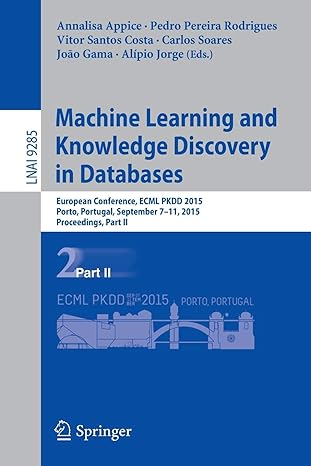Question
Data Abstraction & Problem Solving with C++ Ch. 8 Exercise 12 Repeat Exercise 21 in Ch. 2, using the ADT list to implement the function
Data Abstraction & Problem Solving with C++ Ch. 8 Exercise 12
Repeat Exercise 21 in Ch. 2, using the ADT list to implement the function f(n).
Exercise 21:
Consider the following recurrence relation:
f(1) = 1; f(2) = 1; f(3) = 1; f(4) = 3; f(5) = 5;
f(n) = f(n-1) + 3 x f(n-5) for all n > 5.
a. Compute f(n) for the following values of n: 6, 7, 12, 15
b. If you were careful, rather than computing f(15) from scratch (the way a recursive C++ functiong would compute it), you would have computer f(6), then f(7), then f(8), and so on up to f(15), recording the values as you computed them. This ordering would have saved you the effort of ever computing the same value more than once. (Recall the iterative version of the rabbit function discussed at the end of this chapter).
Not that during the computation, you never need to remember all of the previously computed values - only the last five. Taking advantage of these observations, write a C++ function that coputes f(n) for arbitrary values of n.
Step by Step Solution
There are 3 Steps involved in it
Step: 1

Get Instant Access to Expert-Tailored Solutions
See step-by-step solutions with expert insights and AI powered tools for academic success
Step: 2

Step: 3

Ace Your Homework with AI
Get the answers you need in no time with our AI-driven, step-by-step assistance
Get Started


